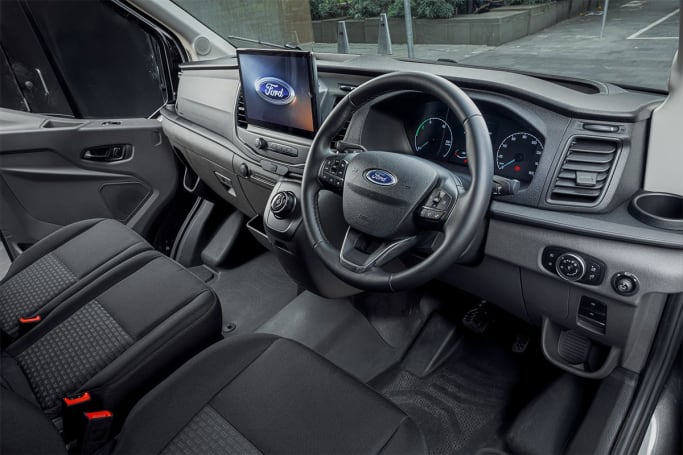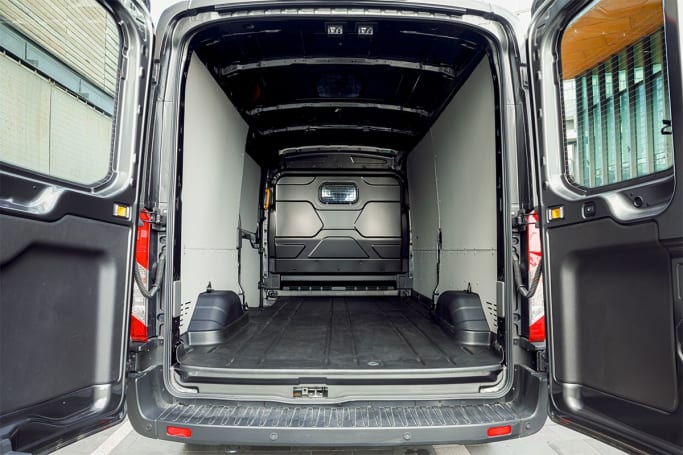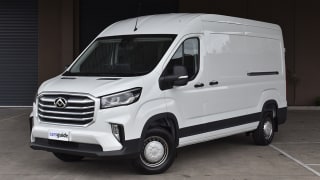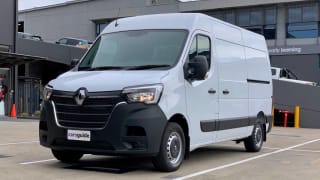Given that you’re paying for expensive batteries and some relatively new tech, it’s no surprise to find that nearly every EV is more expensive than its rough ICE-powered equivalent. Often that difference is as much as 100 per cent more expensive…
But it pays to remember that some of the cost in an EV amounts to front-loading your running costs for the years to come, and when you look at it holistically, the sticker shock is relieved to a certain extent. Still, you get the feeling government fleets and corporate fleets trying to hit a green target are vastly more likely to be E-Transit buyers than self-employed tradies and delivery drivers.

And the bottom line? The cheapest way into an E-Transit is the mid-height roof model which kicks things off at $104,990 before on-road costs. The high-roof version adds another $1500 and there are options including a second sliding side door at $1000, a bucket seat for the passenger (rather than the standard bench) at $150, SVO paint at $1400 and prestige paint at $700. For our money, we’d be ticking the box for the extra side door and the higher roofline if you need it. Reducing the passenger capacity from three to two for an extra $150 just sounds like an own goal. Oh, and you’ll need to find a Ford dealer that’s authorised to sell Ford electric models.
Both mid and high-roof Transits are powered by the same driveline and the difference – literally – is the height of the roofline.
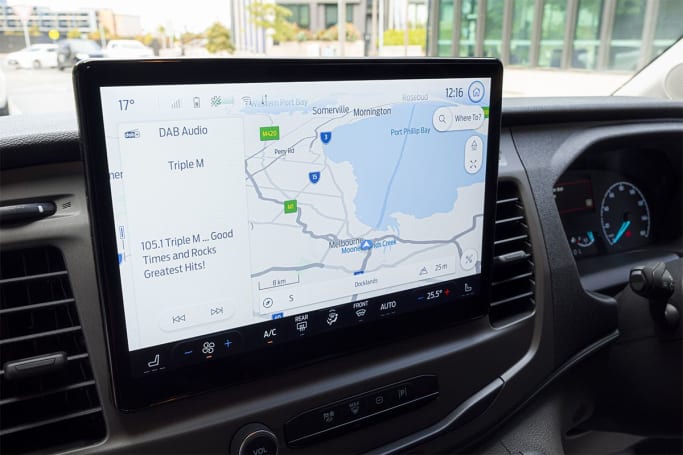
Ford made a big deal of the connectivity of the E-Transit at the vehicle’s launch and, when you think about it, being connected to the world that needs its deliveries, and now, it makes a bit of sense that the van gets the full SYNC4 package accessible via a 12.0-inch touchscreen.
There’s also a choice of drive modes in the E-Transit which cover Eco mode for maximum range, Normal mode for more performance and Slippery mode which seems tailor-made for European markets where ice and snow are part of life.





